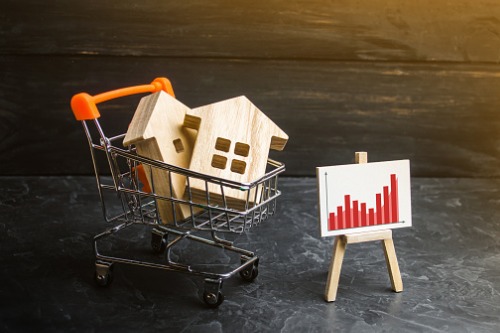

Just-released data has illuminated a sharp rise in the value of new loan commitments for housing across Australia in July, with the figures up 8.9% on the month before.
The results follow a 6.4% rise in June, meaning the country has just seen the largest back-to-back increase in home loans in its 18 years of keeping records.
According to Australian Bureau of Statistics (ABS) head of finance and wealth, Amanda Seneviratne, owner occupier home loan commitments rebounded with the “largest month-on-month rise in the history of the series” as social distancing restrictions eased across much of the country.
By value, first home buyer loan commitments accounted for 38.7% of all owner-occupier home loans in July (excluding refinancing) – a ten and a half year high.
Australia-wide, the value of new loan commitments for owner occupier housing rose 10.7%, while investor housing rose 3.5%. For owner occupier first home buyers, commitments rose 14.4% over the period.
“New loan commitments for owner occupier housing rose in all states and territories, except the Australian Capital Territory. The largest increases were in New South Wales, Victoria and Queensland,” Seneviratne added.
While a strong result, the 8.9% rise evidenced in Victoria in July reflects the period of eased restrictions prior to the rules again being tightened towards the end of the month.
Canstar group executive of financial services, Steve Mickenbecker, has found the figures from July to be some much-needed encouragement.
“New lending is well above a year ago and almost back to the pre-COVID peak in January, suggesting that it is not all gloom and doom and that home buyers are looking forward to an earlier return to growth,” he said.
“The value of new loans is up 11.8% on a year ago, providing stimulus to the struggling economy, with home owners leading the charge. First home buyers in particular are returning to the market, rewarding government for some of the stimulus being directed their way.”
However, while the July figures were largely positive, there remain several areas of concern as Mickenbecker sees it.
He explained, “Investors are showing little appetite for a strong return to the market, with investment lending down 5.10% from July last year, and the property market will have to look elsewhere for stimulus.”
“[Additionally] in spite of Melbourne’s relapse into lockdown in July, new housing lending is up. But the closure and hit to consumer confidence may yet result in a downturn in months to come,” Mickenbecker warned.
